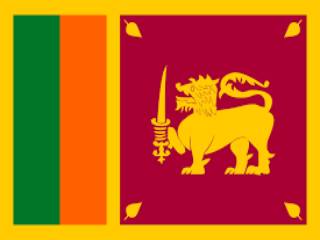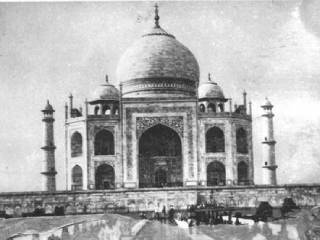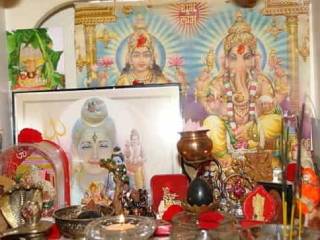Chaitra Krushna Trayodashi
By Gopal Alankar, Ph.D.
Mr. Arun Gandhi the president of now defunct Gandhi Institute of Peace at the University of Rochester, New York, made an anti-Jewish comment in a Washington Post blog dated January 7, 2008. He wrote that Israel uses Holocaust as an excuse to engage in violence and that enraged the Jewish community.
His comment was uncalled for. It did not align with the purpose for which the Institute was founded. His focus ought to have been on the course set for the advocacy of the virtues and benefits of nonviolence, for which the Institute was founded. Reckless meandering into a forbidden turf and then make a disparaging comment on a community that supported the Institute is the height of human folly. One may carry the name of Gandhi or establish an Institute bearing MK Gandhi, but that does not grant him a license to insult a people or a nation. By doing so Arun has wrought havoc on himself. The Institute is now tanked and his job is canned. What a shame!
As a private individual, he is at liberty to speak his mind on any issue including Israel"s indulgence in violence but as the head of the Gandhi Institute his views should have been "fair and balanced." He could have struck a balance by reflecting on the violence that Palestine perpetuates relentlessly on Israel. It is abundantly clear that the game in the Middle East is "violence for violence," and the game always seems to start in Gaza Strip.
I do not see the rationality behind establishing a Gandhi Institute in a foreign land when India needs many such institutes. India has been the victim of violence and terrorism for decades. Northwest, northeast, central, southeast and southwest India have become the powder kegs for genocide. Wouldn"t it then be prudent to preach nonviolence first at home and then transport it to the West? Charity begins at home.
It is strange that even after 62 years of Independence, we still are gung-ho on nonviolence. There are still some among us who passionately believe that nonviolence, the brain child of MK Gandhi, was the sole determining factor for the British to leave. "Without non-violence," they say, "India"s independence would have remained ever elusive." There are others who incessantly preach that nonviolence was an invincible force that sent the British reeling in retreat. These are troubling statements that bear little truth. Did non-violence really win freedom for India? A peek into the early life of Gandhi and the events that lead him to embrace nonviolence will unravel the truth.
Gandhi was born on October 2, 1869 into an affluent family. His father was the Prime Minister of Porbandar, Gujarat. In 1888 he went to the University of London to study law. While in London, he preferred the English life style but remained a staunch vegetarian and teetotaler. After his graduation in June of 1891 he returned home as a barrister, and then practiced law for a couple of years. Having failed to make a dent in the practice, he took a job to assist an Indian firm in South Africa in legal cases. In April 1893 he sailed to Durban.
A week after he arrived in South Africa he was scheduled to go to Pretoria, the capital of Transvaal to participate in a lawsuit. Dressed impeccably in English style and with a First Class ticket he boarded the train to Johannesburg. When the train reached Maritzburg, on a complaint from a white passenger the train official ordered him to move to a third class compartment because laws forbade a colored person to travel in the first class even if he possesed a first class ticket. On refusing to leave, he was roughed up and forcibly thrown out of the train.
This incident is significant in bringing home two historical facts relevant to this discussion. Up until to this incident Gandhi was agreeably in tune with the English thought and culture. The suffering of the Indian masses and the injustices under the British Raj back home made no perceptible impression on his conscience to take up the cause of freedom struggle.
The second and by far the most important fact is that the incident turned him into a champion of the oppressed and a crusader for the rights of the Indian indentured labor in South Africa. He reversed his past course and began to loath the British and British values. But the harsh reality is that it was the revenge rather than the fervor for peoples" good that changed him into a crusader.
For 14 years in South Africa, Gandhi engaged in protests, petitions and prayers to repeal the Asiatic Registration Act, which mandated that all Indians provide thumbprints for registration certificates. Having failed in these methods, he devised a new way for agitation, which he coined as Satyagrah, a set of three principles of courage, nonviolence and truth. Nonviolence was just one component. For the next 7 years Satyagrah became his mode of agitation.
Along the way came two more oppressive laws passed by South Africa. One abolished the non-Christian marriages and the other imposed a poll tax of 3 pounds on Indians who stayed beyond their 5 years" contract. Gandhi intensified his agitation. He was imprisoned, chained, subjected to pinpricks, forced to dig stones and made to sweep cells. Gokhale, his mentor, tried to reason out with the South African Government to free Gandhi and yield to his demands. It did not work. Finally Lord Hardinge, the viceroy of India urged the South African Government to give in. Gandhi was freed from the jail, and Poll tax and Hindu marriage abolition acts were retracted. This was a partial success but one that was achieved through the Viceroy of India and not through nonviolence. The Asian Registration Act still remained intact.
After 21 years in South Africa, Gandhi returned home in 1915 as a disillusioned fighter but with a strong resolve to pursue the Indian freedom struggle through Satyagrah. The next 30 years saw him lead noncooperation, civil disobedience and quit India campaigns but to no avail. Churchill who came to power in 1940 humiliated Gandhi by calling him a naked fakir and a rascal. Ironically these were the words from a person who walked naked at his home in front of his housemaid. Churchill"s animus for Indians was despicable. He once said, "I hate Indians. They are a beastly people with a beastly religion." So much for a bigot!
American president, Franklin D. Roosevelt needed India"s help in World War II against Japan. He urged Churchill to give independence to India in exchange for Indian soldiers. In 1942 Churchill sent Sir Stafford Cripps to India with a proposal that offered India the dominion status. Gandhi and Indian Congress pressed for full independence instead. Cripps returned to England without a deal. Disappointed, Gandhi and the Congress leaders decided to start Civil Disobedience. Before it ever started, all the leaders were jailed. This enraged the Indians who resorted to violent acts against the British.
Gandhi became gravely ill in Jail and Churchill"s hatred for Gandhi can be measured in what he said when told of Gandhi"s condition. "Did he not die yet?" was his cynical reply. Gandhi was released on May 6, 1944 on health grounds.
World War II ended in the summer of 1945. In the General Election that followed, Churchill lost to Clement Atlee. With war-torn economy in shambles, Britain was in no shape to hang on to the vast colonial Empire. In March 1946 Atlee agreed to grant independence to India. The following years saw independence granted to many colonies – Burma, Ceylon, Ghana, Malaysia, British Guyana and others that had no history of freedom struggle. So it is correct to conclude that independence to India was a given with or without Satyagrah. The truth is that nonviolence was inconsequential in achieving India"s independence.
History will attest that the old scores among the nations were settled with bazookas; the new disputes were leveled with missiles; the sectarian animosities were accosted with human bombers and the border disputes were tackled with tanks and MIGs. Indeed, there was no place in them for nonviolence, nor would there be any in future.
The argument herein is not about nonviolence as a nonviable force but about it as a force that has no record of success yet. Nonetheless it is a powerful concept and a remarkable tool that will find a theoretical niche in the textbooks on political science and human behavior.
Gandhi"s struggles against the injustices done to the people exemplify his profound divine sacrifice unparalleled in human history. Einstein said of him thus:
"Generations to come will scarce believe that such a one as this ever in flesh and blood walked upon this earth."
What a wonderful tribute!
(The writer is a retired freelancer. He holds a Ph.D. in Administration and Management in addition to degrees in engineering. He enjoys writing on community related issues.)
Source: http://www.blogs.ivarta.com/india-usa-blog-column103.htm

 Mizoram: EC accepts Christians’ demand to defer counting on Sunday, but what if Hindus had made a similar demand?
Mizoram: EC accepts Christians’ demand to defer counting on Sunday, but what if Hindus had made a similar demand? Sign Petition : Immediately repeal the draconian and unconstitutional ‘The Waqf Act, 1995’
Sign Petition : Immediately repeal the draconian and unconstitutional ‘The Waqf Act, 1995’ Shriram : Sri Lanka’s saviour
Shriram : Sri Lanka’s saviour Why it is so cool to malign Hindu gods and goddesses, but it may not be that easy now
Why it is so cool to malign Hindu gods and goddesses, but it may not be that easy now Shocking Truth of Taj Mahal exposed by Late Pujya P. N. Oak
Shocking Truth of Taj Mahal exposed by Late Pujya P. N. Oak How are Hindus treated in states where they are in a minority?
How are Hindus treated in states where they are in a minority?